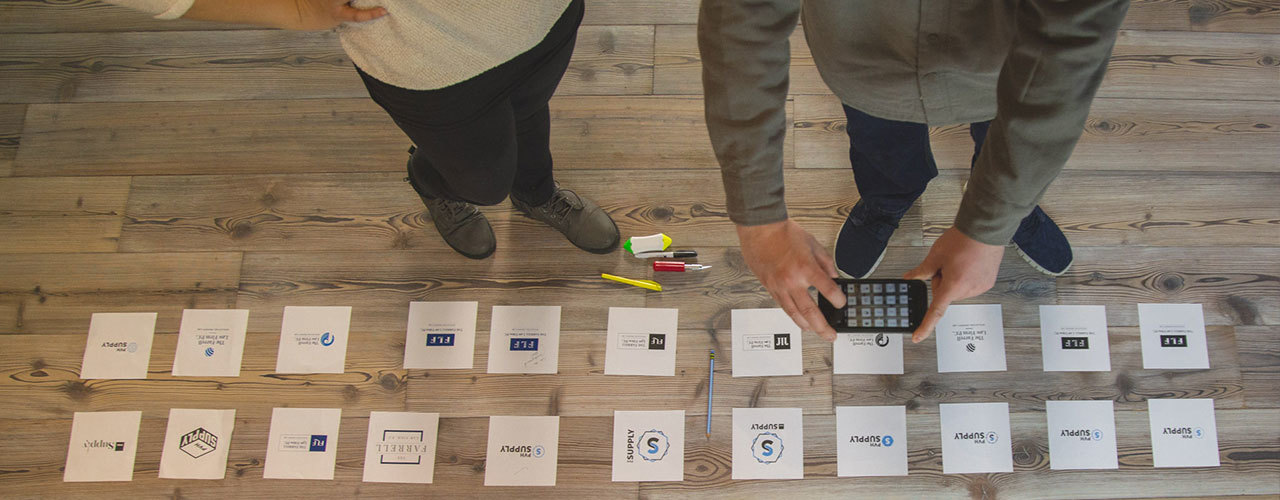We are brought up in a black and white world, dependent on those around us. As children, shades of gray are withheld from us, because they complicate our surroundings. As we grow older and navigate through life’s nuances, we are taught to go it alone; independence is emboldened.
When selecting a creative agency to grow your brand or business, there are a number of key factors to take into consideration. The range of agencies in 2018 is as vast as the companies they serve, spanning all industries. Components such as budgeting, core services, strategy, communication style, expertise and even company culture can determine whether an agency could potentially be the right fit to meet your business’ varied marketing demands.
Before choosing an innovative partner to expand your online presence, it is imperative to perform an in-house analysis of your marketing efforts thus far, and your marketing requirements moving forward. With growth tactics advancing daily, it can be incredibly challenging to manage all marketing efforts without employing a team to do so, and that is where digital agencies come in.
The role of a creative agency is to address client goals and provide a blend of creative and strategic solutions to meet and exceed them. Such goals can range from constructing an impactful brand identity to producing valuable content for increased credibility, implementing scalable campaigns for growth and developing a data-driven plan to maximize brand exposure. It is essential to choose an agency who can effectually drive growth to your company, and bring your unique goals to life.

1. Culture
Companies that invest in their working environment, activities, and overall culture, invest in the well-being of their team members. Company culture establishes a true sense of identity, employee loyalty, brand reputation, work ethic and quality production. It’s not much of a surprise that happy people are 12% more productive.
You’ll want a digital partner whose mission, vision and core values jive well with your own. Discovering agency culture could mean having discussions with multiple team members, asking questions tailored around their workplace dynamic, or looking into their social media channels and online presence. Culture humanizes a company, and should always be a final deciding factor when choosing your partner in growth.
It’s likely that you will spend a considerable amount of time interacting and collaborating with your digital partner. In fact, your partnership may last months or years, so it is in your best interest to familiarize yourself with the workplace culture of your chosen digital marketing partner and make sure that their culture aligns itself with yours.
2. Budget
When it comes to web design, branding, and digital marketing, there is a broad range of price points based on several factors. Dependent on your brand’s specific needs, decisions such as custom web design or template sites will help to determine your expenditures. While every company’s budget is different, prioritizing which aspects of digital marketing will best benefit your business will allow you to properly budget for your company’s growth.
Formulating questions ahead of time, such as which percentage of your budget should be allocated to which services, which channels are worth investing in, which specialized services are imperative to growing your business and what your primary business goals are will significantly aid in establishing your company’s price point.
Agencies can range from one-man independent businesses to large multinational corporations and everything in between. For this reason, your budget will depend on your specific demands and marketing requirements, as well as the capabilities of your in-house team and what you’ll need from your external digital marketing team.
In the past five years, we’ve seen a steady increase in budgets, because of a higher demand for mobile-first web development, faster websites, content creation and a greater emphasis on the ever-changing, advanced devices being used by consumers. By 2021, the US digital marketing budget is anticipated to reach near $120 billion dollars.
3. Billing Methods
Based on your particular goals and needs, agencies offer flexible pricing models to suit businesses across all industries. It is important to have a firm grasp of the scope of services your company will require. In doing so, you can weigh the pros and cons of each billing method, and make an educated decision when choosing the model that best suits your company’s needs. The standard three billing options are Fixed Scope/ Fixed Bid, Retainer and Time and Materials.
Fixed Scope/Fixed Bid
With a Fixed-Scope model, the partnership is project-based. This works best when the projects at hand are short-term and clear-cut, the budget is fixed or limited and the project requirements exceed the capabilities of your in-house team.
Retainer
A retainer model is ideal for ongoing marketing demands, a broad range of services and continuous support. In choosing a retainer billing method, your digital partner will take on the tasks your internal team does not have the time to complete. When projects have lengthier timelines and various services are required, retainer partnerships are a perfect fit.
Time and Materials
The third billing method is incredibly straightforward, Time and Materials. When choosing a Time and Materials billing method, your payment is only for the time and resources required to complete your given project. When a project’s scope is not fully defined, or is subject to shifts and adjustments, Time and Materials offers the necessary flexibility.

4. Strategy & Process
The most common methodologies are Agile, Scrum and Waterfall. Here at Bowen, we take a hybrid approach and have adopted the very best components of each one to best serve our clients needs. Taking into consideration your desired level of involvement, timelines and budget, you’ll want to ask the right questions to discover the internal process of your potential digital partner, and find the right agency to suit your needs.
Agile
With agile, the process requires collaboration, frequent adaptation, and changing requirements over time. With iterations being continuously developed, constant feedback is always welcomed. Agile encourages teamwork and face-to-face communication, and works best when clients, major stakeholders and developers are able to work together to meet both the company goals and consumer needs. In fact, 98% of survey respondents reported that Agile brought them project success.
Scrum
Scrum is a subset of Agile. Scrum rapidly increases productivity and encompasses a process framework that develops products in short cycles. Though led by a ScrumMaster, the scrum team divides and tackles problem solving and tasks together. Every member of that team is crucial when constructing, implementing and executing ideas into products. The scrum model creates projects through a series of sprints.
Waterfall
The waterfall methodology incorporates more of a traditional, sequential approach. Waterfall works in stages including discovery, wireframe, design, development, testing and completion. Throughout the Waterfall process, there is constant and meticulous documentation, as clients are not involved in the software development. The due date, resources needed and development costs can be determined early on, since the process has a clear beginning, middle and end to it.
5. Timeline
When hiring an external team to meet your digital marketing goals, it is very important to establish a realistic timeline and set of deliverables. To know if an agency’s previous deadlines were met, initiate a conversation of transparency regarding the length of their timelines for projects both big and small.
It is essential that your timelines are practical for the scale of your projects. If your project has a three or four-month timeline, make sure your digital partner is able to carry that out. If it is ongoing work that’s needed, make sure the agency is on board with that as well. Sharing timeline expectations prior to beginning projects will ensure both parties are on the same page throughout the project’s duration. As periodic goals are set together, agencies can create roadmaps to guide present and future success and hit important milestones along the way.
6. Geography
When agencies were first formed, they weren’t spread all over the US. The best agencies were coastal, for the most part. In turn, customers didn’t mind utilizing top-notch agencies from opposite ends of the country. In 2018, however, award-winning agencies are located everywhere. At Bowen, many of our clients prefer to have a face-to-face relationship, and we’ve seen the true value in that. The beauty of utilizing a local agency means advancing your relationship from digital to personal.

7. Diverse Portfolio
When choosing a digital partner, take note of their diverse portfolio of clients. A well-rounded client portfolio can indicate not only experience, but a deeper understanding of multiple industries, marketplaces, consumer bases, and various skill sets.
There is a digital marketing partner for every brand. With that being said, it is crucial that you choose an innovative partner who can represent your brand in the best light possible. By having a look at your prospective agency’s portfolio and work produced, you will know if they have previous experience working within your specific marketplace. Some agencies specialize in specific audience targeting, while others choose another approach. Finding an agency who compliments and understands your brand inside and out is key.
8. Communication Style
Healthy and consistent communication are core components of a cohesive working relationship between you and your digital partner. Perhaps your preference is scheduled calls, emails or in-person meetings. Whatever your chosen method of interaction, you’ll want to work with an agency who matches your communication style.
The larger the agency, oftentimes, the more difficult it is to have consistent communication. Your account may be assigned to someone who has not been an active part of your project. With smaller agencies, however, account managers who have known your project from day one will likely be the same point of contact throughout your partnership.
Prior to partnering, you’ll want to make sure your ideal communication style can be met by your digital partner, and vise versa. Do you prefer in-person communication? Scheduled calls, screen shares or emails? At Bowen, we use tools like Slack, and can enable client access if they are tech-savvy. Working with a flexible team ensures there is no need to adapt to a brand new communication process.
9. Core Services & Strengths
Selecting an agency whose core services complement your company’s marketing needs is integral for your success. It is important to partner with an agency who specializes in the particular areas you’re looking to grow your company in. For example, if your company is in need of a consistent graphic designer, choosing an agency with an in-house design team is key. It is crucial to identify and assess your marketing needs before choosing an agency, and have a clear-cut vision and expectations for both your brand and your digital partner ahead of time. By doing your due diligence in utilizing the expertise from within your internal team, you will develop a greater understanding of what specific services are needed externally. Understanding your company’s core objectives — whether it is increasing lead generation, gaining more traction on social media platforms or upping your brand awareness and audience engagement —can help you hone in on the type of agency that specializes in tackling these specific objectives.
You should perform an internal discovery prior to meeting with an agency, develop a strategic plan and point out what your internal team is capable of producing, and what strategies need to be implemented by your digital partner.
10. Age & Experience
When choosing an agency, it is important to know and understand the kind of approach your digital partner will take when positioning your brand in front of your target audience. You may want to know the backgrounds of the employees within the agency, as well as the age of the agency and how long they’ve been in business. Looking into an agency’s team will inform how their members can apply their experience to boost your business.
Doing some light investigation work can help you to uncover the credentials of the agency (Google Partners, trainings and certifications, awards received, conferences/summits and seminars attended, and leadership within their industry). You can also find out if the agency has had success with similar conversion objectives. This can help you to determine if your goals match up with their approach to increasing your ROI.
It is important that your partner practices what they preach, and carves out the time necessary to build their own brand through multiple channels. Take into account how they market themselves. If they’re experts in blogging, how does their blog look? If social is their speciality, how are their social media accounts? For SEO, how do they rank?
In 2018, digital agencies are subject to increased demands and expectations coming from both internal and external markets. Client needs and marketing expectations are rapidly advancing, setting a higher standard for digital agencies across all industries. Incredibly refined, granular reporting demands for marketing have been set by Google, Amazon, and Facebook, and in turn, global agencies have set the tone for all agencies to follow. Digital is a continuous evolution, and agencies must be equipped to grow and adapt with the ever-shifting landscape.
